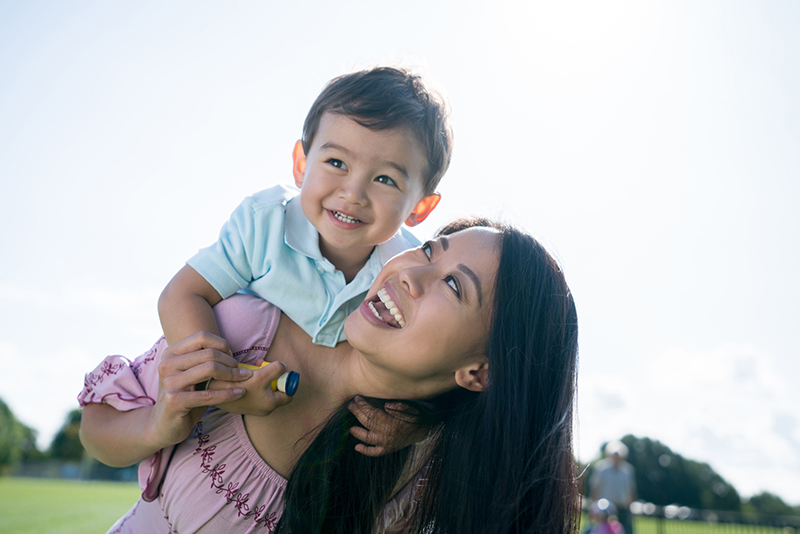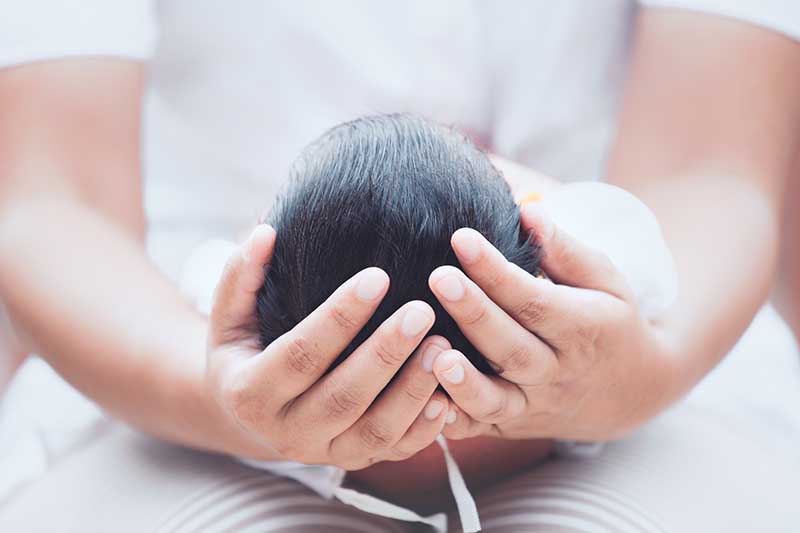Families For Life | Talking with Babies and Toddlers: Why It’s Important-Newborn

Talking with babies and children from birth is important because it builds your child’s language and communication skills. These are important skills for life. Talking with your child doesn’t have to be a big deal – just chatting about everyday things is a great start.
Talking with babies and toddlers: why more talk is better
Talking with your baby or toddler can help his language and communication development. The more you talk with your baby or toddler, the better.
This is because parents who talk a lot to their young children use lots of different sounds and words. When children hear more words, it helps to improve their understanding of language, and increases the number and variety of words that they can understand and use.
And it’s not just about better language skills. Talking with babies helps their brains develop and can help children do better at school when they’re older.
What kind of talking?
Talking with babies and toddlers doesn’t have to be a big deal. You can start by talking about everyday things in your home and family life – just whatever you’re doing with your baby at the time.
For example, you’re outside with your baby and he points to a tree. You could say, ‘It’s a great big enormous tree, isn’t it? I wonder what kind of animals live in that tree? Maybe a squirrel?’
How much talking?
Any and all talking is good for your baby, so try to talk as much as you can during the day.
Babies like quiet times too, so if your baby stops responding to you and starts to look tired, restless or grumpy, you might like to choose another time in the day to talk. Your baby’s personality might also affect how often she wants to communicate with you. Some babies are naturally more outgoing, and others are quieter.
When to start talking?
It’s great to start talking with your baby as early as you can. In fact, from birth your baby absorbs a huge amount of information about words and talking, just from listening and watching you talk.
Conversations with your baby might feel one-sided to begin with. But even though your young baby doesn’t have words yet, she’ll still try to join the conversation! She communicates with you through crying, eye contact and listening. Later on, she’ll coo, smile, laugh, make more sounds and move her body to communicate with you.
If you give your child your full attention when you’re talking, you’ll notice these attempts to respond to you.
By communicating back and forth with your child in a warm and gentle way, you’re creating and sharing experiences together, which strengthens relationships and helps children learn more about the world at the same time.
Tips for talking with babies and toddlers
Any time you’re with your child is a good opportunity to talk. This could be when you’re changing diapers, having lunch together, travelling in the car or train, pushing the pram or just pottering around the house – you don’t need to make a special time for talking.
You might feel silly at first trying to have a full conversation with a baby, but keep at it! Conversations and activities that include some of the points below are good for developing your child’s language skills.
Tune into your child
Turn off distractions. For example, put your phone on silent, turn off the television and computer, and just ‘be present’ to talk to your child.
Listen to what your child is trying to communicate. Even if he isn’t using words yet, ask him questions and build on his efforts. For example, if your child is pointing at a dog, say, ‘It’s a fluffy white dog. What do you think he’s going to do now?’.
Use natural pauses. Your baby will eventually fill in these pauses when her language develops. This also teaches her ‘give and take’ in a conversation.
Know when to stop. If your child starts to look tired or restless, or gets grumpy, don’t force him to keep listening. Pick another time when you can tell he’s ready for a chat.
Be interesting
Notice what your child is paying attention to and talk about that. For example, if she’s playing with blocks, talk about the blocks.
Talk to your child about things he’s likely to be interested in – for example, what mummy/daddy/grandma/grandpa might be doing today, a story you’ve read together, or something that’s happening outside.
Use lots of expression to make your conversation interesting and engaging. What you talk about doesn’t matter as much as how you talk about it.
If you use complex words, explain them and build on them by using lots of descriptive words. For example, ‘We’re going to see the paediatrician – that’s a special doctor who knows all about babies and children’.
Read, tell stories, sing songs and make rhymes
Read books and tell stories to your baby from birth, every day if you can. After a few weeks, your baby will know that this is when you enjoy a quiet, special time together.
Talk about the pictures in books, wonder out loud what might happen next in the story, point out words and letters, and let your child touch and hold the book and turn the pages. You can make up your own stories to go with the pictures in the book.
Help your child learn that books and reading are fun. You can do this by having a special reading spot, making cuddles part of reading time and letting your child choose some books – even if you have to read the same ones over and over again!
Sing songs and rhymes in the car, in the bath, at bedtime – even if it’s off-key. Your baby will love the rhythm of the words and will be soothed by your voice.
Your child will also learn to talk by watching how you communicate with others. If you talk in a positive way, your child will learn to speak positively to others. For example, when you’re talking together at mealtimes, you can use positive language like ‘What was good about your day today?’
Video: Connecting and communicating (0-6 months)
Watch this video and learn the importance of communicating with your baby, and how it helps her learn and develop.
Video: Connecting and communicating (7-17 months)
Watch this video and learn the importance of communicating with your baby, and how it helps her learn language.
Video: Connecting and Communicating (18-35 Months)
Watch this video and learn the importance of communicating with your toddler, and how it helps him learn and develop.
© raisingchildren.net.au, translated and adapted with permission
Explore more

DID YOU KNOW?
Cradle cap is the oily, scaly crust that babies sometimes get on their scalps, in their body folds and on their torsos. Although cradle cap looks uncomfortable, it doesn’t usually bother your baby.
READ MORE